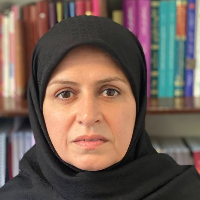A Review of the Indices of Mizaj-e-Meda (Temperament of Stomach) identification in Persian Medicine
Author(s):
Article Type:
Research/Original Article (دارای رتبه معتبر)
Abstract:
Background And Objective
Digestive diseases are one of the problems of the health system in the world. From the perspective of Persian medicine, the stomach begins the second stage of digestion and its function plays an important role in human health or illness. The written sources of Persian medicine have been widely used to determine the health of the stomach. The purpose of this study is to summarize indices of Mizaj-e-Meda (Temperament of Stomach) identification to help better diagnose the status of health or illness of stomach.Methods
In this review article, 11 valid Iranian medicine sources and scientific databases of Scopus, PubMed, Science Direct, Google Scholar, Elsevier, and web of science as well as Persian indices of SID, Iran Doc, Magiran were searched and the existing views were summarized.FINDINGS: In the sources of Persian medicine, the indices of different types of Mizaj (temperament) and Su-e-mizaj (abnormal temperament) have been proposed. Seventeen articles on the subject of gastric diseases in Persian medicine were found; one case merely examined gastric symptoms, while others only slightly referred to the indices. Some of the most important indices considered in these sources for identifying the type of Mizaj-e-Meda were the way of digestion, desire for food according to the type of Mizaj (temperament), thirst, appetite, burrow, moisture and taste of the mouth, tongue and mouth condition, flatulence, quality of waste matter, speed of food passage, sour stomach, burning stomach, stomach ache and stomach malmas (touch).
CONCLUTIONS: Persian medicine sources have fully cited gastric indices, which can be used for a more effective diagnose and treatment and even prevention of gastric diseases, and can also be used for designing and validating standard scales for Mizaj-e-Meda (Temperament of Stomach) identification.
Keywords:
Language:
Persian
Published:
Journal of Babol University of Medical Sciences, Volume:20 Issue: 7, 2018
Pages:
63 to 70
https://magiran.com/p1874631
مقالات دیگری از این نویسنده (گان)
-
Therapeutic Effect of Echium amoenum on Isoproterenol-Induced Heart Failure in Male Rat
Hossein Jafari, Alireza Imani, Mansoor Keshavarz, Hanieh Babaei, Somayeh Esmaeili, Ehsan Raeis-Abdollahi, * *
Research Journal of Pharmacognosy, Autumn 2024 -
A Review of "Narcissus tazetta L." in Traditional Persian Medicine and Modern Medicine
Parivash Gholami, , Maryam Hamzeloo-Moghadam, Ghazaleh Heidarirad, Sajjad Sadeghi, Mahmood Khodadoost
Traditional and Integrative Medicine, Spring 2024 -
Major and minor criteria for gastric dystemperaments in Persian Medicine: Sari gastric dystemperament criteria-I (SGDC-I)
Mahshid Chaichi-Raghimi, Reza Ilkhani, Elham Parsa, Mahmood Khodadoost, Rasool Choopani, , Mojgan Tansaz, Mina Movahhed, Hasan Namdar, Elham Emaratkar, Mahdi Alizadeh-Vaghasloo, Mamak Hashemi, Malihe Tabarrai, Reihane Moeini, Narjes Gorji, Abbas Alipour, Parisa Jafari, Fatemeh Hakimi, Farideh Yaghmaei, Armin Zareiyan, Ali Montazeri, Morteza Mojahedi*
Caspian Journal of Internal Medicine, Autumn 2022 -
Approach to "Belching Disorder": A Review of Avicenna"s Point of View in Comparison With Modern Medicine
Mahshid Chaichi-Raghimi, Morteza Mojahedi, Ebrahim Khadem, Seiedamirhossein Latifi, Abbas Alipour, Reza Ilkhani*
Crescent Journal of Medical and Biological Sciences, Jul 2020




